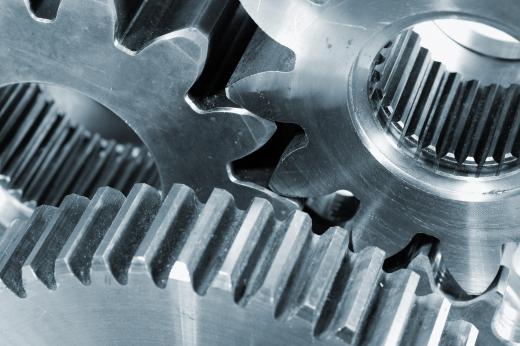Titanium as a useful metal alloy was not commonly used until the late 1940s. It is most often alloyed with molybdenum, manganese, iron, and aluminum. By weight, it's one of the strongest readily available metals, making it ideal for wide range of practical applications. It is 45% lighter than steel with comparable strength, and twice as strong as aluminum, while being only 60% heavier.
As an element, titanium has an atomic number of 22. Its atomic mass is 47.867 amu, it has a relatively high boiling point of 3020°F (1660°C). It has several radioactive isotopes, including 44Ti, 45Ti, and 51Ti, which are created when the element is bombarded with deuterons.

In commercial use, titanium alloys are used anywhere strength and weight are an issue. Bicycle frames, automobile and plane parts, and structural pieces are some common examples. In medical use, pins made from this metal are used because of their non-reactive nature when contacting bone and flesh. Many surgical instruments, as well as body piercings, are made of it for this reason as well.

Titanium is often used in desalinization plants because of its strong resistance to corrosion from sea water, particularly when coated with platinum. Many ships use the metal for moving components constantly exposed to sea water, such as propellers and rigging.
The military uses this element extensively for a wide array of tasks. Missiles, airplanes and helicopters, submarines, and virtually all vehicular plating use substantial amounts of titanium alloy. During the Cold War, the Russians constructed submarines from it to give them higher maximum velocities and a higher tolerance for pressure, thereby allowing them to travel deeper.
In jewelry, titanium is one of the most popular metals. This is due to its ability to be colored easily, and its relative inertness. Even people with hypersensitivities to metals are often not affected by jewelry made from it.

The commercial applications of this element are not limited to its metallic alloys. Both rubies and star sapphires get their star-shaped reflection with the presence of titanium dioxide (TiO2), and the metal is therefore produced artificially for use in gemstones. TiO2 is also used extensively in sunscreens as a result of its shielding properties, and as a general-purpose paint. Titanium tetrachloride (TiCl4) is used in skywriting, where letters are written in the sky by a passing plane.









